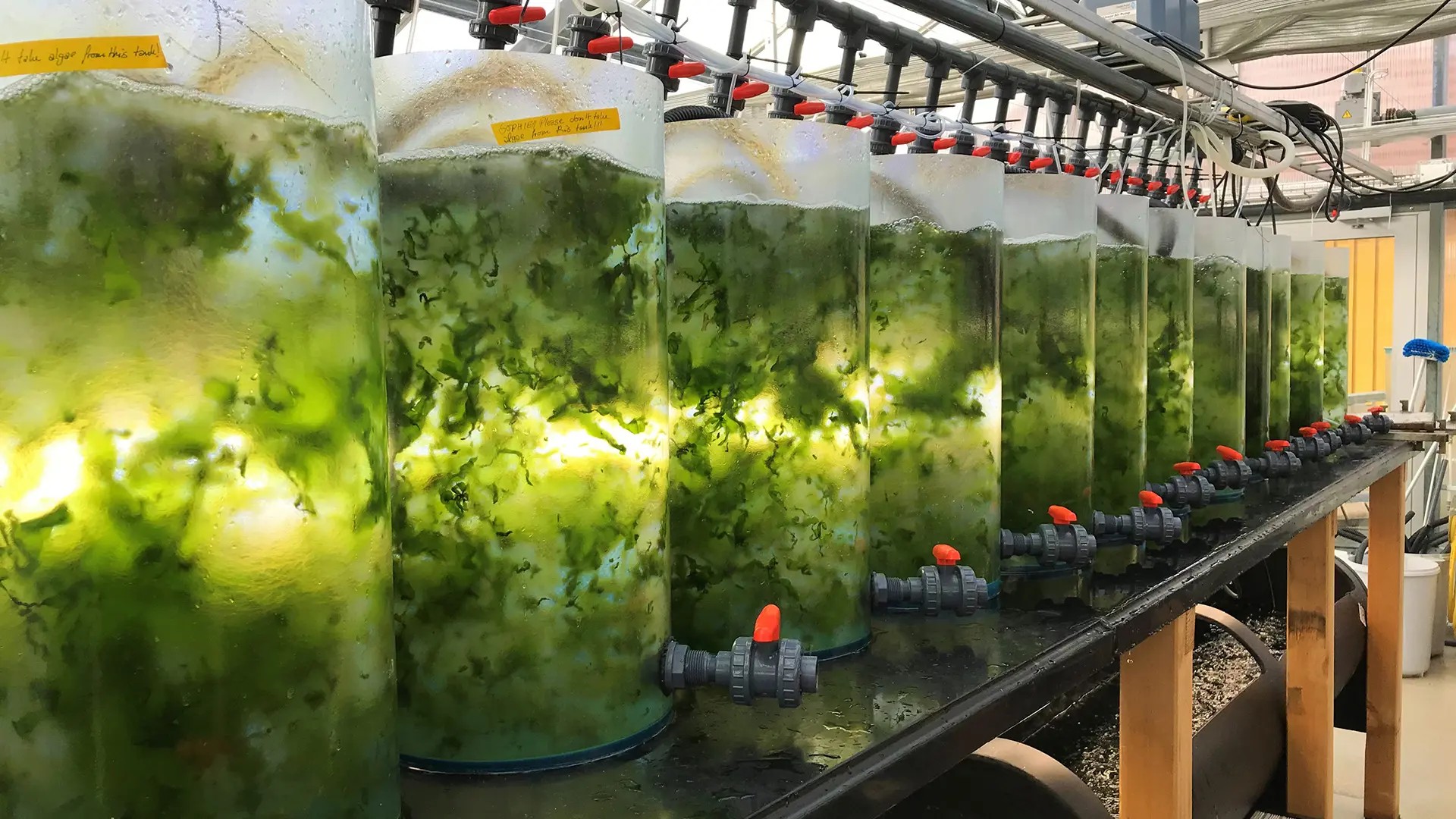
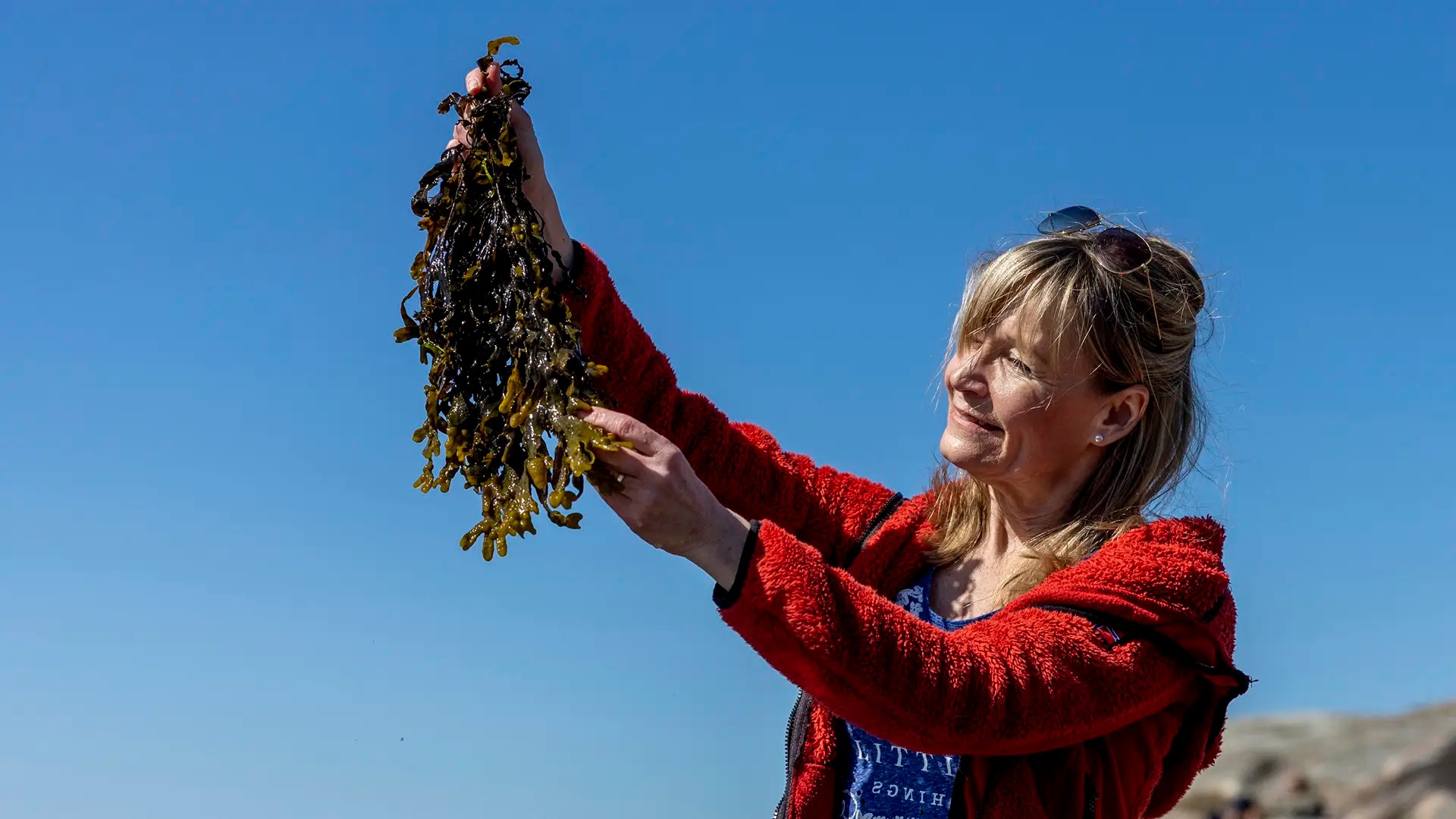
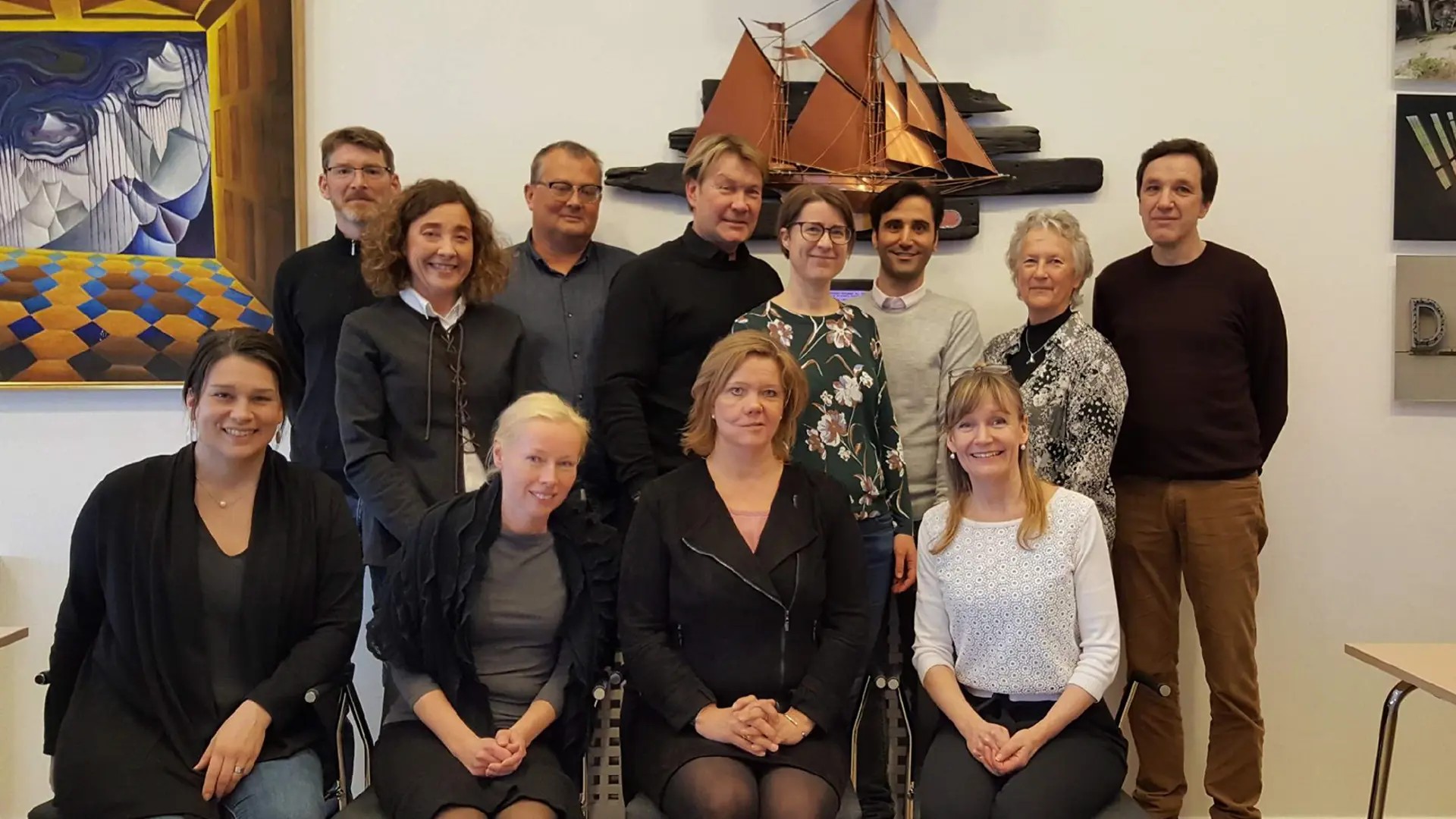
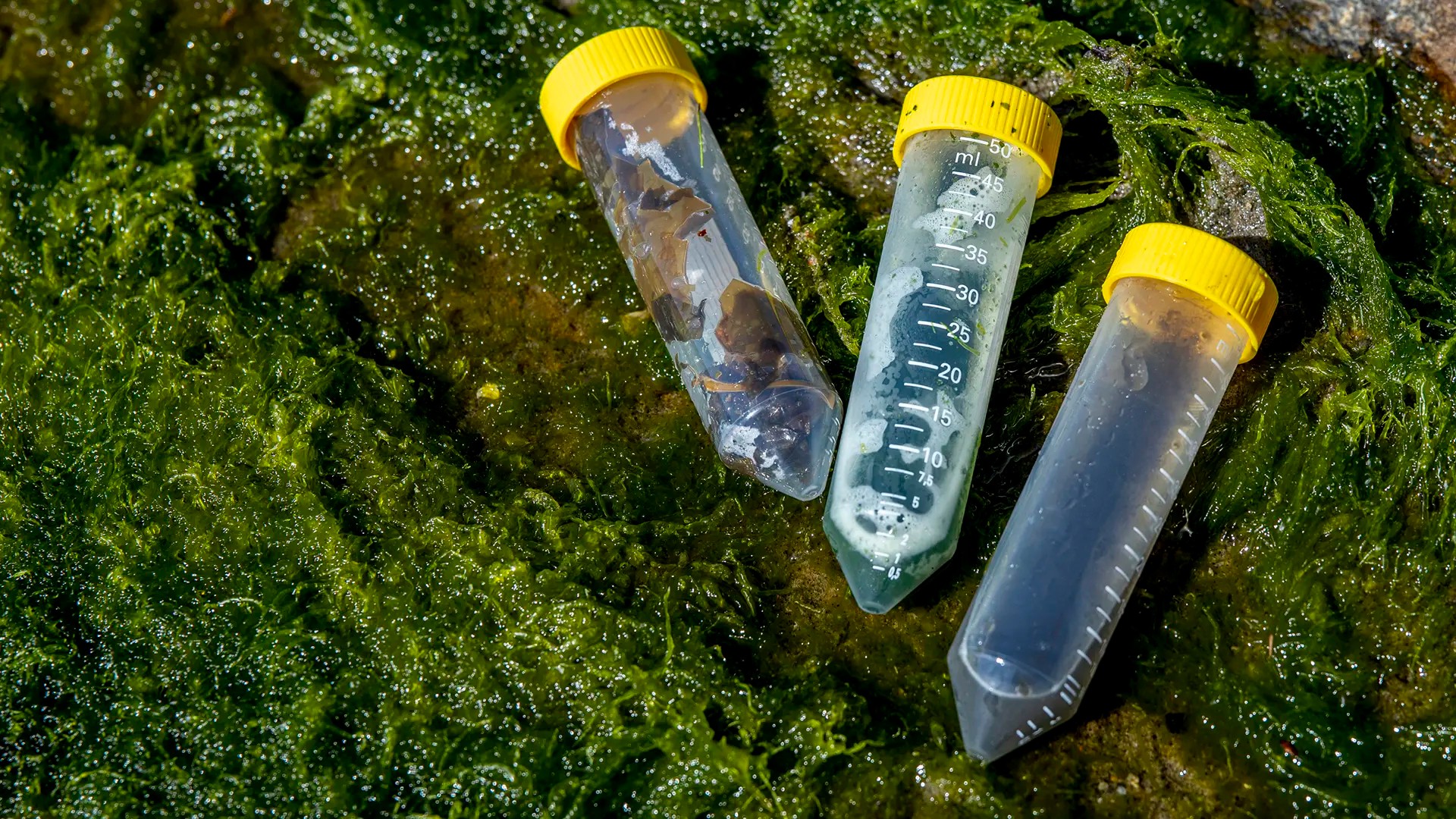
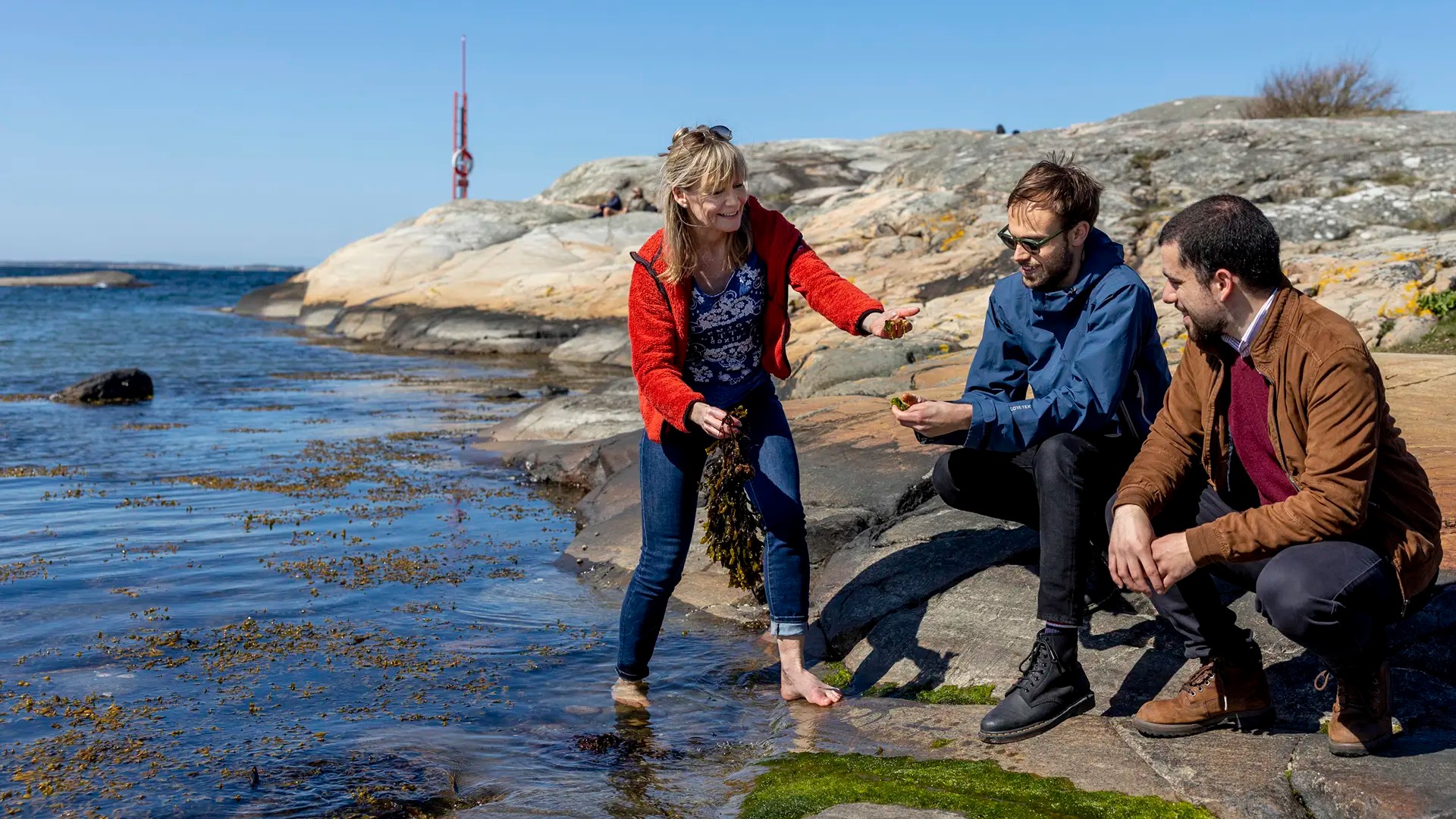
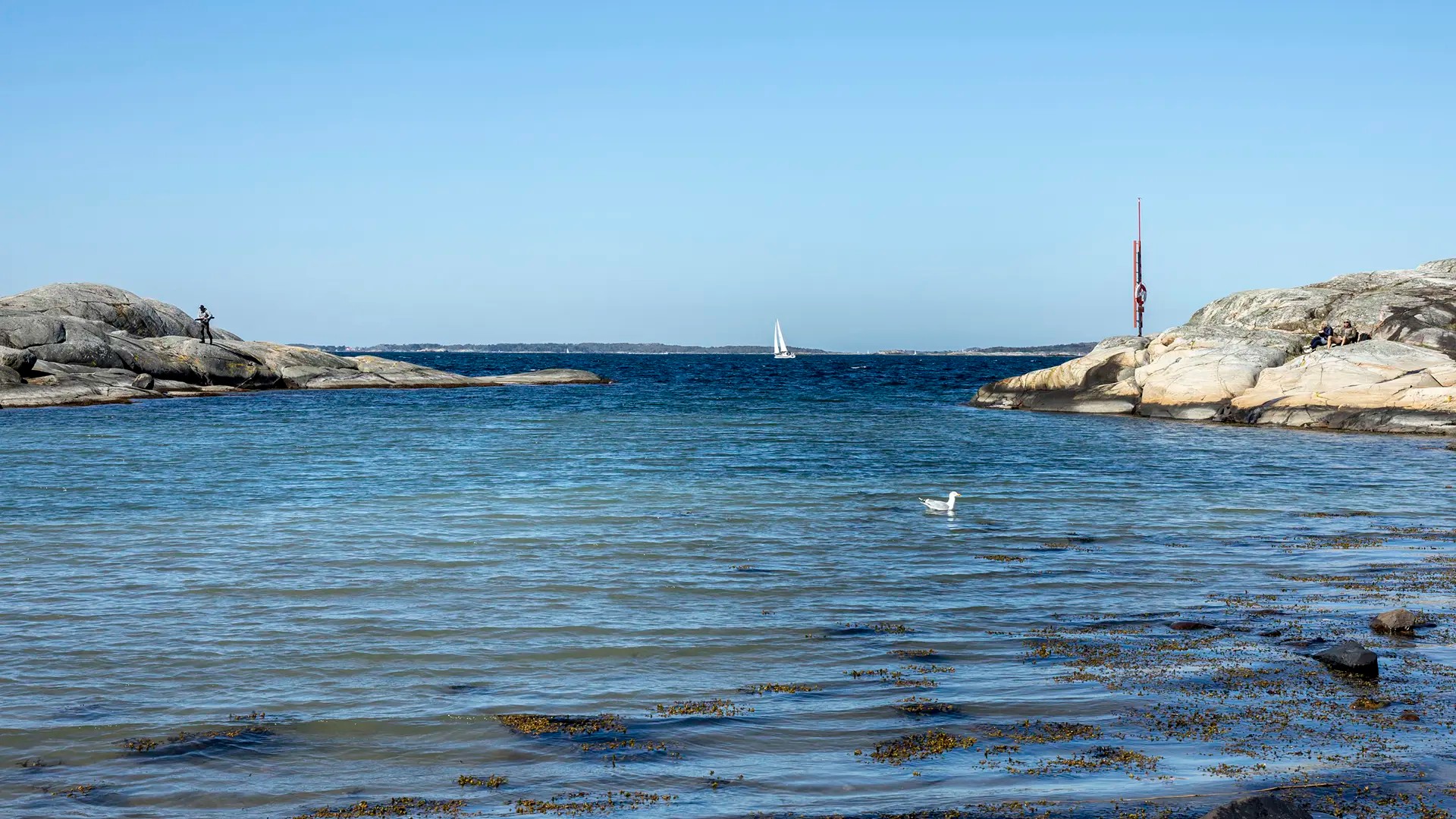
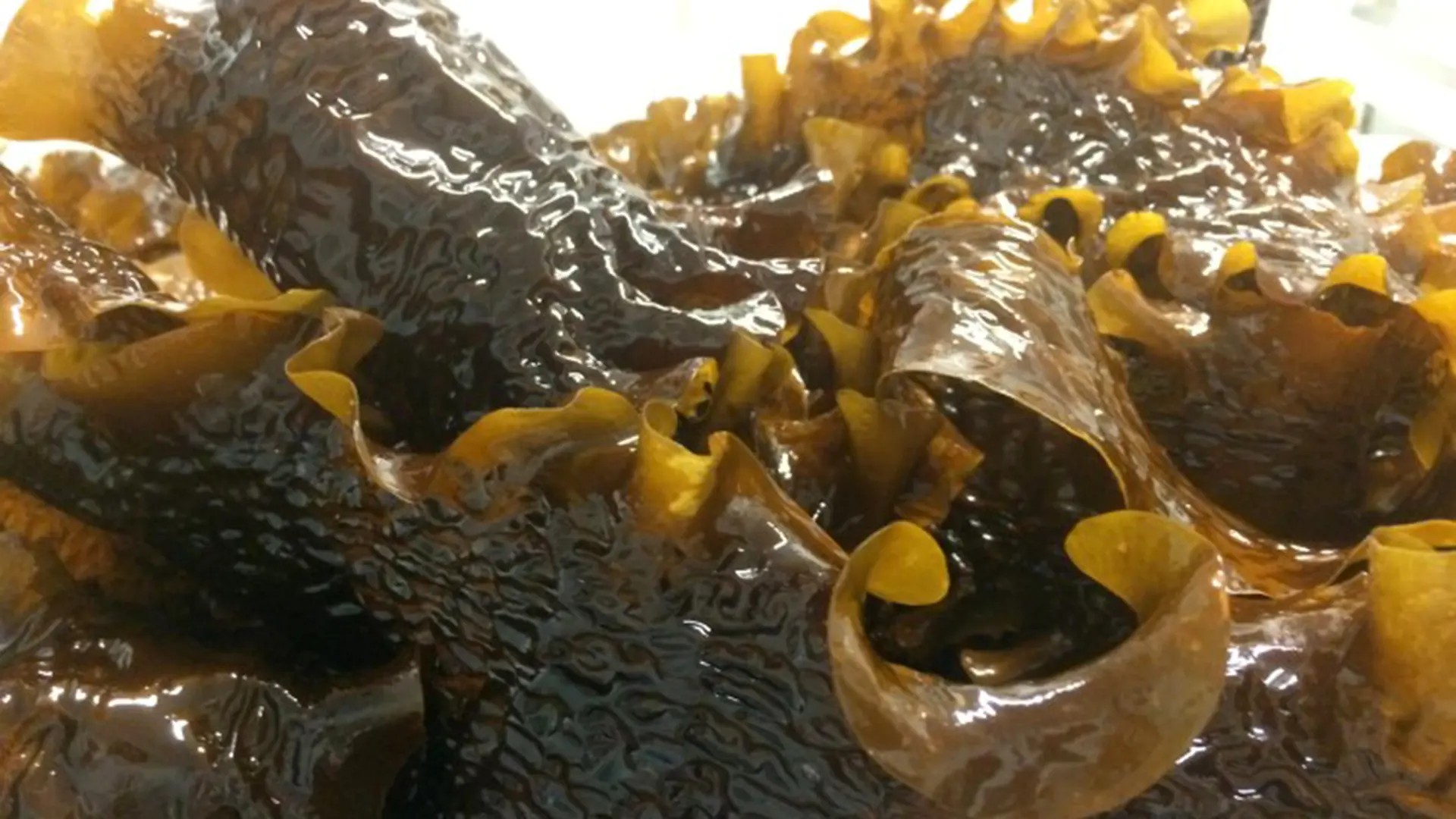
The project CirkAlg is a collaboration between several Universities, companies and a government agency with the aim to develop techniques to increase the protein content in seaweed and products thereof. In a first step the seaweed is cultivated in nutrient rich media and in a second step scalable processes are developed to concentrate the protein from the cultivated seaweed. Other central objectives of the project include analysis of sensorial perspectives, nutritional value and food safety of the seaweed, seaweed-derived protein ingredients and in products containing these.
Background
The demand for vegan and vegetarian protein sources is increasing to provide a more sustainable food supply chain and to meet the desired decrease in meat consumption. In CirkAlg, we explore the potential of Swedish seaweed as a contributor to this protein shift by developing a two-step circular strategy by which the protein content of seaweed products can be further raised.
Seaweed contains varying amounts of protein; usually about 5-25% of the dried weight, and this protein is very rich in essential amino acids. Seaweed is also rich in umami-tasting substances, minerals and vitamins; among the latter is for example vitamin B12. Some seaweed also contain the well-known marine omega-3 fatty acids that can prevent cardiovascular disease and positively affect brain development.
Aim and objectives
The aims of CirkAlg are to:
- Develop a new circular food production chain in which growth conditions and media for tank cultivated seaweed is optimized to elevate its protein content.
- Use and develop scalable techniques to concentrate the seaweed protein into tasty and safe protein ingredients with high nutritional value.
To reach the first aim, we take advantage of food side streams to tailor-make the seaweed growth media. The second aim is to be met by developments of technologies where seaweed protein is upconcentrated by separating it from other algae constituents. The sensory properties of the produced seaweed and protein ingredients are also evaluated, as well as its nutritional and food safety aspects. Together with our industrial partners Oatly and Vegme, seaweed-containing food product demonstrators are finally produced.
Our vision is that CirkAlg will contribute to a new circular blue-green industry in Sweden, where algae farmers and food companies work in symbiosis to create favorable conditions for production of a new Swedish alternative food protein source. By optimizing taste- and nutrient profiles of both seaweed and protein ingredients, both of these products can become attractive contributors to the ongoing dietary protein shift, and also to raised food security. Ultimately, a more sustainable food production system is created, both financially and ecologically.

How do we work to fulfil our aims and objectives?
In a first step we cultivate seaweed in tanks on land in presence of nitrogen-rich food process waters as a route to circulate currently lost nutrients back to the food chain, at the same time as the protein content of the seaweed is elevated. In contrast to cultivating at sea, tank cultivation is not dependent on season and one can harvest the seaweed biomass anytime during the year. In CirkAlg, we work with the two green algae species sea lettuce (Ulva fenestrata) and gutweed (Ulva intestinalis), as well as with sugar kelp (Saccharina latissima) that is a brown seaweed species. Aside from the protein content, we also analyse the profile of amino acids and other nutrients such as metals.
In a second step we subject the seaweed to downstream processing in which the protein is upconcentrated by dissolving it at a high pH, where after non-protein matter e.g. carbohydrates, are removed and the protein is precipitated at a pH where it has minimal solubility. We recently observed that this technique could concentrate seaweed proteins 4-5 times, reaching concentrates with up to 70% protein. However, this process has earlier not been optimized for seaweed as a resource and is therefore not sufficiently efficient; we therefore investigate different strategies to increase the protein recovery during processing.

To ensure tasty and safe ingredients, sensory analysis and partitioning of potential heavy metals as well as iodine is recorded during the protein concentrating process, followed by speciation and in vitro bioavailability studies using human intestinal cells. The seaweed biomass itself is also subjected to similar analyses. Altogether, CirkAlg will thus take a holistic approach to contribute to the protein gap; with the creation of a new secondary food chain based on side streams from primary food processors; altogether contributing to more circular food production.

Funded by
- Formas (Public, Sweden)